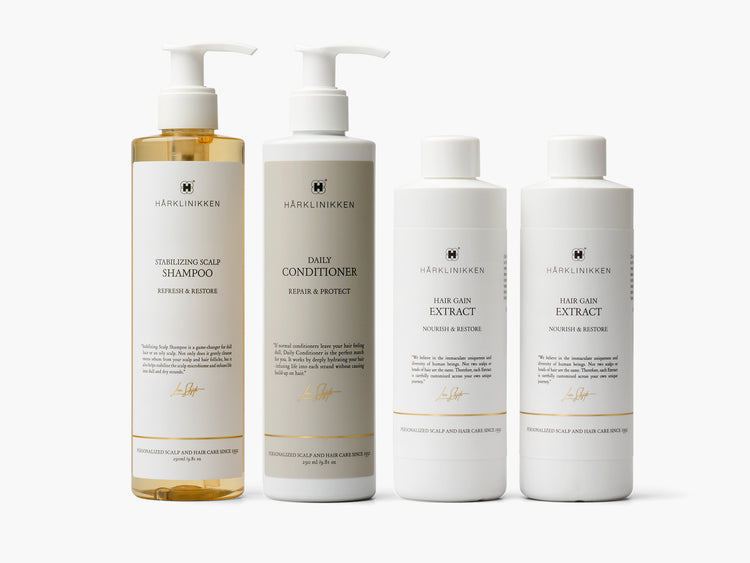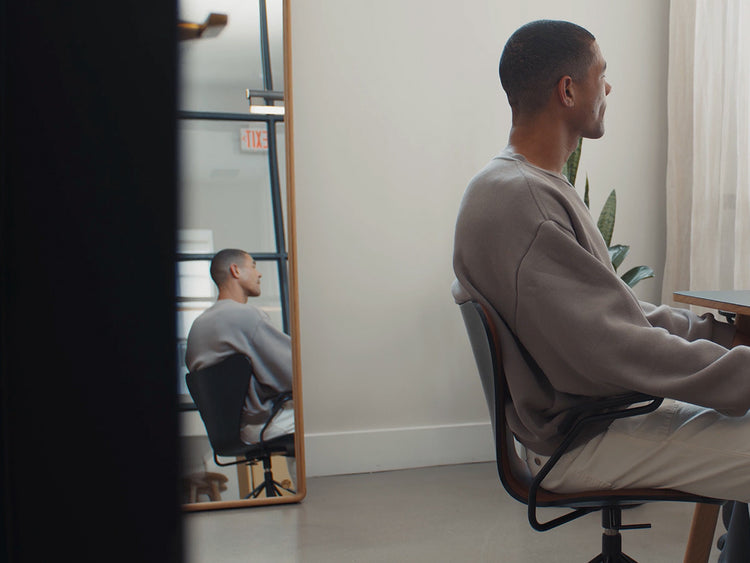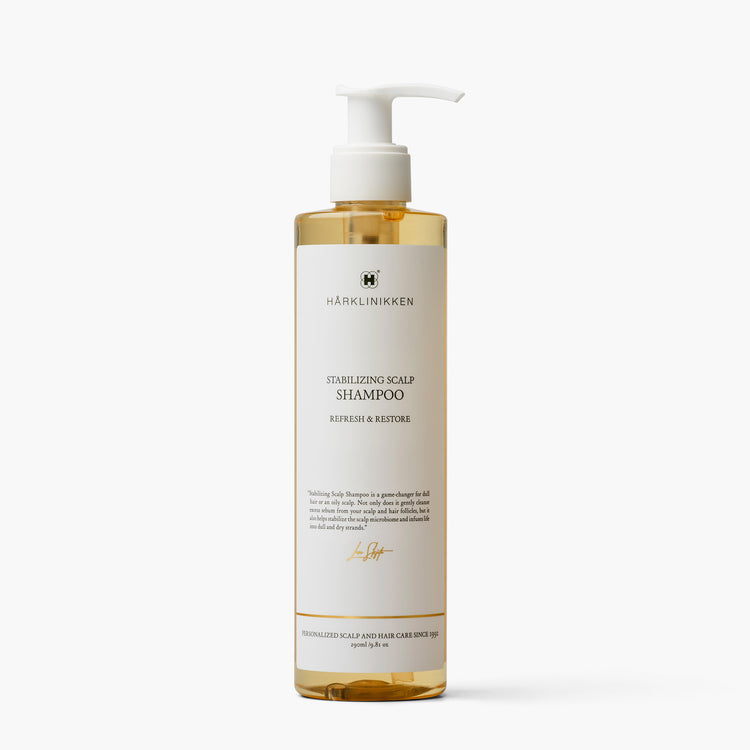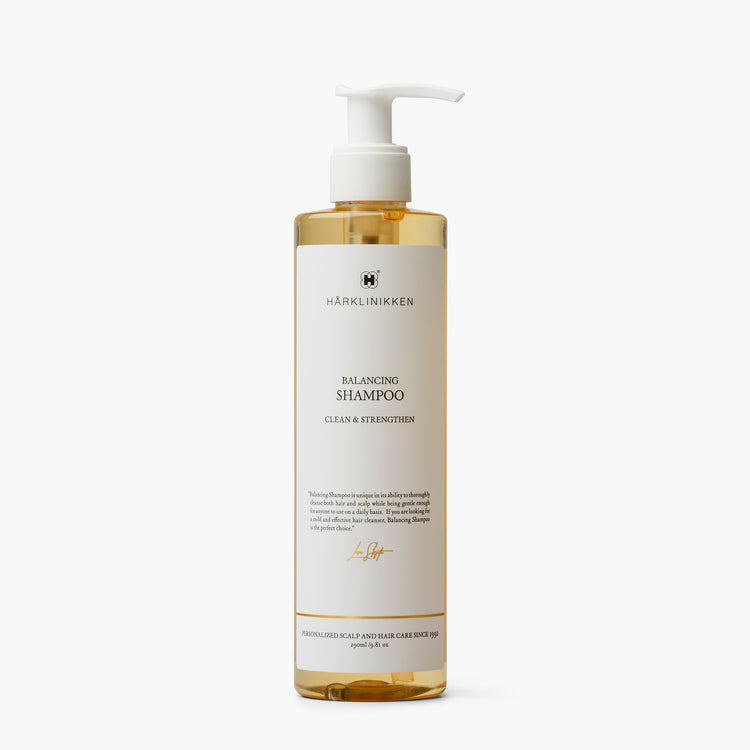By now most of us know that strong, healthy hair begins at the scalp – making the idea of a scalp “detox” pretty appealing. But before embarking on an endeavour like that, it’s important to understand what it means and if it’s necessary.
Understanding that the scalp is a delicate ecosystem is the first step in improving its health and (in turn) gaining fuller, more lustrous hair. The next step is treating your scalp right.
What is a scalp detox?
A scalp detox is essentially a deep cleanse to rid it of buildup caused by sebum, dead skin cells, product, pollutants, and dirt. But if you maintain an effective cleansing routine, there is typically no need to detox. Many so-called detox products contain abrasive scrubs and harsh chemicals that can cause scalp irritation, hair breakage near the root and damage to hair follicles. By compromising the hair at the earliest stage of growth – at the root – you can negatively impact its strength, look and feel as it grows.
Signs your scalp needs a "detox," deep cleanse or reset:
Leaving buildup on the scalp for long periods of time can cause havoc on the scalp and hair follicles, leading to various issues that signal your scalp needs more frequent cleansing.
These could be some telltale signs your scalp needs a thorough cleanse:
- Your scalp is oily or greasy
- Your scalp is irritated, itchy or flaky
- Your scalp smells
- Your scalp feels sensitive or even painful
- You have excessive hair shedding
- Your hair is limp, lacks shine and/or has lost its wave, curl or coil pattern
Common scalp cleansing and detox mistakes to avoid:
Some advice around scalp detoxing suggests the use of harsh products and tools. But while these solutions might clear buildup from the scalp, they can simultaneously create new and more problematic concerns.
Scalp massagers
These tools can be rough on your hair follicles. Whether crafted from silicone, plastic or rubber, scalp massagers can cause tearing and micro traumas to the follicles. Your fingers are typically the best tool when it comes to scalp massage, rubbing and hair care in general. But if you need to use a tool for mobility reasons, make sure to opt for a softer material (such as silicone) and use it very gently on your scalp.
Scalp scrubs
Scalp exfoliators are mostly too harsh on your scalp skin and hair follicles. Whether formulated with plant-based scrubs or plastic microbeads (which are also bad for the environment), these products can cause damage to your follicles – creating tears or scratches that can lead to scarring. This scarring can result in a follicle being unable to grow hair.
Too much shampoo / product
When using an effective and scalp-safe shampoo like one from Hårklinikken’s lineup, you don’t need to use an excess. Our cleansers are formulated carefully to be mild yet efficient. Too much shampoo that includes problematic ingredients can strip your scalp and hair of much-needed hydration. Many so-called “clean” shampoos don’t create that satisfying lather, which can lead people to use an excess of product. We recommend using Hårklinikken’s range of shampoos, as well as following our instructions carefully for a happier, healthier scalp.
A haphazard method
While shampooing your scalp seems straightforward and simple, many people have a haphazard shampoo method that neglects their crown and nape. Another detrimental method is using fingernails when cleansing your scalp. While it might feel like you’re getting a deep clean, you could be damaging your scalp skin and hair follicles when using your fingernails to scratch your scalp when shampooing. A comprehensive cleansing technique is crucial to resetting and detoxing your scalp.
How to deeply cleanse or detox your scalp at home:
At Hårklinikken, we suggest a five-step approach to cleansing your scalp, you can read more about the best methods for shampooing here.
Step One: Wet Hair
Thoroughly wet your hair with warm to lukewarm water from scalp to ends.
Step Two: Apply Conditioner First (Optional)
If you have hair that’s particularly dry or damaged, you should apply conditioner first. Work a few pumps of conditioner into the lengths of your wet hair – from about your ears down. Leave it for a few minutes while you move on to the next step.
Step Three: Emulsify
Take a couple of pumps of shampoo and work it between your fingers to emulsify.
Step Four: Massage Product into Scalp
Place your fingertips underneath your hair, rather than on top of your head. Massage the emulsified shampoo (don’t neglect the back or crown) into your entire scalp. Be sure to knead with your fingertips rather than rub or scratch using your fingernails. This should take about 30 seconds.
Step Five: Rinse
Thoroughly rinse shampoo (and conditioner) off your scalp and hair. Squeeze hair with your hands gently but firmly to remove excess water before moving on to next steps for drying and styling.
(And read more here for best conditioning methods.)
Scalp Reset Essentials
Stabilizing Shampoo
More than just a cleanser, our Stabilizing Shampoo also nourishes the scalp and protects your hair, and it’s good for daily use. Uniquely formulated with constituents found in our burdock root extract, it’s designed to optimise conditions of your scalp for healthier, stronger and more lustrous hair.
Balancing Shampoo
Formulated with mustard seed oil, our Balancing Shampoo cleanses the scalp from oil and product buildup while strengthening hair. Unlike many shampoos on the market that can leave your hair dry and your scalp feeling tight or irritated, this formula provides a thorough cleanse that’s gentle enough to use daily.
Fortifying Shampoo
Formulated with aloe vera, our Fortifying Shampoo is a super-gentle cleanser that also helps protect and hydrate hair, making it an excellent choice for people with dry, damaged, or colour-treated strands.
Scalp Detox FAQs
We recommend shampooing daily or every second day in order to balance your scalp’s pH and sebum levels.
To effectively remove buildup, we recommend shampooing frequently, using the correct method, with one of Hårklinikken’s shampoos.
Scalp buildup is normal and caused by various factors from natural sebum production and dead skin cells to outside influences like pollutants, dirt and product. While some of this buildup cannot be avoided, we recommend avoiding products that include silicones and mineral oils, and never use dry shampoo.ntent
The scalp is a delicate biological environment, and when it’s not cared for properly you can cause an imbalance in its microbiome, leading to scalp irritation, redness, and inflammation that can result in hair thinning.









